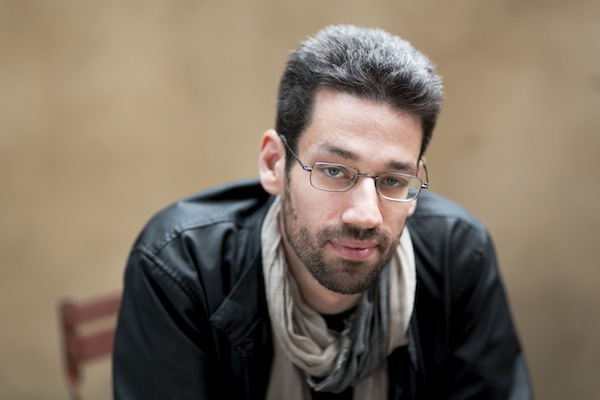New Andres concerto a highlight in mixed Philharmonic program

Courtney Lewis conducted the New York Philharmonic Thursday night. Photo: Renee Parenteau
A hallmark of the Alan Gilbert era at the New York Philharmonic has been his commitment to contemporary music. With Gilbert’s tenure coming to a close, it was surprising not to see him onstage Thursday night with Jonathan Biss to introduce a significant new work to the orchestra’s repertoire. Getting the assignment instead was Jacksonville Symphony music director and former Philharmonic assistant conductor Courtney Lewis, in his subscription debut.
The Blind Banister (2015) is Timo Andres’s third piano concerto, and part of a series organized by Biss of five new piano concertos inspired by Beethoven’s own set. Andres’s contribution is the response to No. 2, though it does not quote directly; indeed, its most immediate resemblance is to No. 4, beginning as it does with a strong if somewhat mysterious statement from the solo piano.
The Blind Banister takes its name from a line of the poem Schubertiana by Tomas Tranströmer: “the blind banister that finds its way in the darkness.” The concerto is a rich, varied, and quite beautiful piece, and Biss gave it a superb performance. The basic idea that begins the first movement, “Sliding Scale,” is a simple, pulsing repetition accompanied on one and and then the other by rippling tremolos. As the music begins to take shape, it opens up into bright, airy chords before being finally joined by the orchestra. The accompaniment takes a variety of forms and many different roles: sometimes a few lonely winds complement the romantic swells of the piano, at others the full orchestra grows into a massive, bellowing force that overwhelms the soloist. Andres shows flashes of wit here and there, but for the most part the character of The Blind Banister is sober and earnest.
More of those bright chords punctuate the start of “Ringing Weights,” a quasi-scherzo, as the orchestra becomes more scattered, with nattering sounds of struck wood, the burst of a drum, or a xylophone glissando suddenly interjecting here and there. A trio section presents a halting dance of jazzy chromatics. Biss’s playing was confident and expressive, particularly in the prominent cadenza, a nod to the one that Beethoven wrote much later for Concerto No. 2. Much of this music is inscrutable, as in the reintroduction of the orchestra for the final movement, “Coda.” Uncertainties persist, but we finally get an assertive, if abrupt, close.

Jonathan Biss Photo: Benjamin Ealovega
Alas, little else on Thursday’s program measured up to the Andres concerto, even on paper—Beethoven’s own Piano Concerto No. 2, which followed after intermission, is notable insofar as it represents the first mature attempt at a piano concerto (as is often observed, it was composed before the earlier-published Concerto No. 1) by a composer who would later make immortal contributions to the genre. Yet it is among the most frustrating works in the great master’s catalogue, an early piece still beholden to Mozart that shows plenty of polish but precious little in the way of Beethovenian daring.
The first movement showed signs of under-preparation: the Philharmonic strings sounded thin and dry as onion skin in their opening tutti, and as Biss made his entrance his passagework was sloppy. Lewis, to his credit, followed the soloist like a hawk, even where his runs were uneven and he showed a tendency to rush. Still, Biss employed a gentle touch, giving his playing a soft glow, and was brilliant in the famous 1809 cadenza, the only patch of emotional turbulence in the movement. It was almost comical to return from the intensity of the cadenza for a quick, dainty closing restatement of the primary theme.
The most compelling movement of the concerto is its Adagio, where the tender, quiet emotion of the solo part is contrasted by the muscle-flexing swells of the orchestra. Biss gave his most considered, heartfelt playing here, and followed with a nimble, adequately bubbling account of the cheery closing Rondo.
The program’s opener was not particularly illuminating, either: the first scene from Part Two of Berlioz’s Roméo et Juliette made for an unconvincing concert overture, played without much conviction. The strings sounded watery in the depiction of Romeo’s tearful solitude, mostly surface sound with little definition–this can be fine as an effect, but as the basic sound quality of a performance it merely comes off as flimsy. The interpretation showed very little life until the scene of the Capulet ball, and even that felt like empty bombast.
More successful was the closing item, Elgar’s In the South (Alassio) from 1904. After a slow start, in which inadequate balancing led to a thick and indistinct mass of sound, Lewis and the Philharmonic were able to find their focus and deliver a clear, soul-swelling rendition of Elgar’s starry-eyed romantic overture.
The program will be repeated 8 p.m. Saturday and 7:30 p.m. Tuesday at David Geffen Hall. nyphil.org